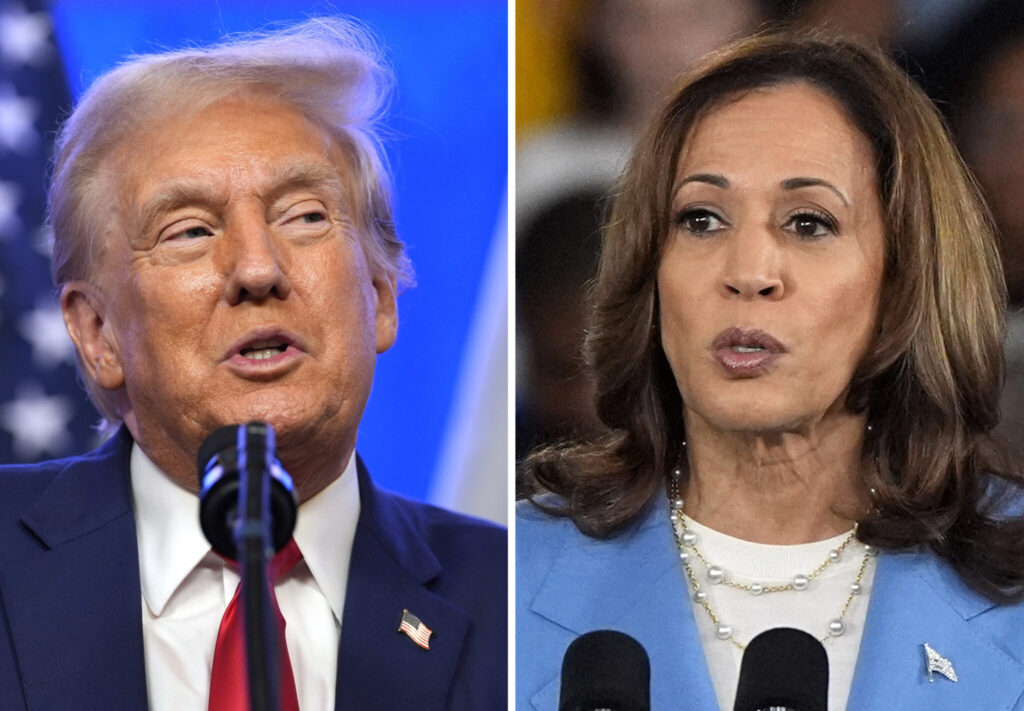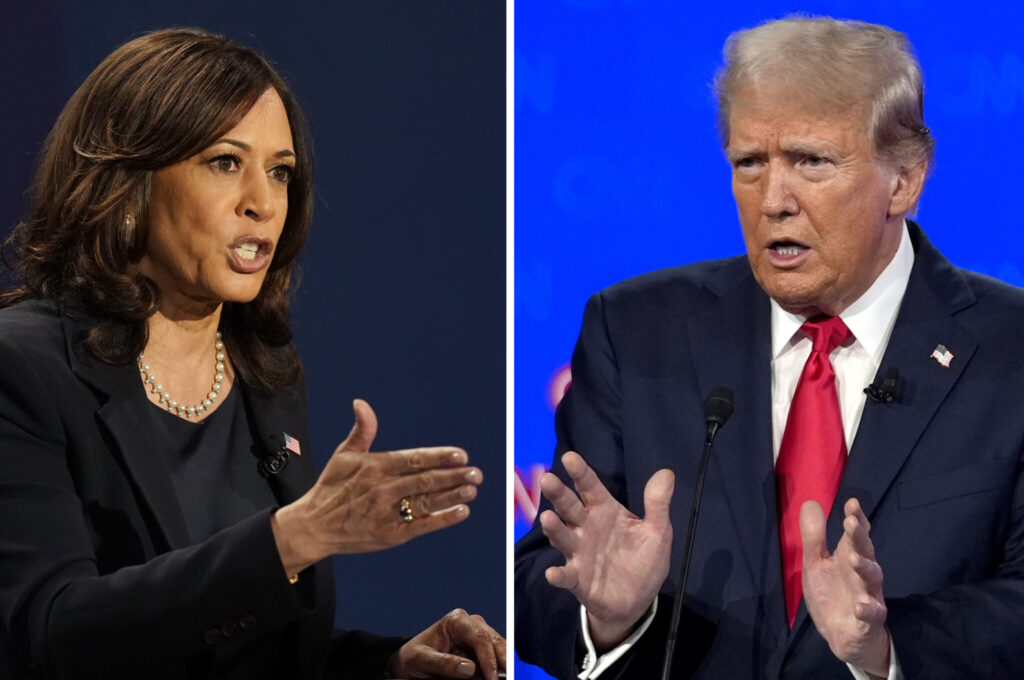Kamala Harris and Donald Trump are set for their first and possibly only debate, offering a high-pressure platform to present contrasting visions for the U.S. The debate, set in Philadelphia, follows a summer of political upheaval, including Biden’s withdrawal and Trump’s survival of an assassination attempt. Both candidates are aiming to sway voters ahead of early voting, with Harris defending her policy shifts and Trump highlighting her past liberal stances.

Harris and Trump Debate Quick Looks:
- Kamala Harris and Donald Trump will debate face-to-face for the first time.
- The debate occurs after Biden withdrew from the race, and Trump survived an assassination attempt.
- Harris aims to defend the Biden administration while addressing her shift to more moderate positions.
- Trump, supported by Tulsi Gabbard in prep, seeks to highlight Harris’ past liberal policies.
- The debate takes place in a small, empty amphitheater with no live audience, eliminating crowd reactions.
Key Moments to Watch in Harris-Trump Landmark Debate
Deep Look:
Kamala Harris and Donald Trump are set to engage in their first face-to-face debate on Tuesday night, marking a key moment in the 2024 U.S. presidential campaign. The event, scheduled for 9 p.m. Eastern in Philadelphia, offers a critical chance for both candidates to lay out their distinct visions for the future of the country.
This debate comes after a turbulent summer in U.S. politics. President Joe Biden stepped out of the race following a widely criticized performance in the previous debate, opening the door for Harris to take center stage as the Democratic contender. Meanwhile, Trump managed to survive an assassination attempt, solidifying his position as the Republican candidate. Both parties have finalized their running mates, with Harris paired alongside Minnesota Governor Tim Walz, while Trump continues to run solo at this stage.
Set at the National Constitution Center, the debate offers Harris a critical opportunity to present herself as a stronger advocate for Democratic policies than Biden was. She’s expected to highlight the Biden administration’s achievements, but also must address several of its lower points, including her own shift from more liberal positions to a centrist stance. Trump, on the other hand, aims to portray Harris as an out-of-touch liberal, using her past positions as a focal point for his critique.
t 78, Trump has struggled to respond to Harris’ unique profile as the first woman of color and first person of South Asian descent to serve as vice president. Despite her identity, Trump has repeatedly invoked racial and gender stereotypes during the campaign. His advisors have urged him to focus more on policy differences, rather than personal attacks, but it remains to be seen how his debate strategy will unfold.
Harris, for her part, will need to defend both her record and her policy shifts. Over the years, she has transitioned from supporting more progressive causes, like Medicare for all and mandatory gun buybacks, to taking more moderate stances. Recently, she has described these shifts as pragmatic choices, even as some of her previous supporters have expressed concern over her changing positions. In response, her campaign published a webpage outlining her current policy positions in preparation for the debate.
Trump’s debate strategy has been bolstered by former Democratic congresswoman Tulsi Gabbard, who harshly criticized Harris during the 2020 Democratic primaries. Gabbard has been actively involved in informal debate preparations with Trump’s team. Gabbard’s input is likely to steer Trump’s focus toward Harris’ past positions and shifts in policy. In fact, Trump’s campaign has been highlighting Harris’ earlier, more left-leaning positions, emphasizing her pivot on issues like fracking and healthcare.
While Harris and Trump’s policy differences will be at the heart of the debate, the setting itself will provide a unique atmosphere. The debate stage, located in a small amphitheater at the National Constitution Center, is designed for a more intimate exchange between the candidates. There will be no live audience, eliminating the cheers, applause, or interruptions that often accompany high-profile political debates. The candidates’ lecterns will be set approximately 6-8 feet apart, and they will enter from opposite sides of the stage at the same time.
The stakes are high for both candidates. Harris has been largely absent from the media spotlight, having participated in only one formal interview over the past six weeks. This debate offers her a rare opportunity to engage with voters directly and present a case for her candidacy. Trump, on the other hand, brings years of experience in high-stakes debates, having run for the White House three times before. As noted by Governor Walz, this marks Trump’s seventh major debate, giving him a considerable edge in terms of preparation and familiarity with the format.
Key issues like women’s reproductive rights will likely dominate Harris’ talking points, particularly following Trump’s endorsement of Florida’s six-week abortion ban. Harris, a vocal supporter of abortion rights, is expected to highlight the Republican candidate’s inconsistent stance on the issue. She will also likely emphasize Trump’s role in the January 6 Capitol attack, framing him as a continued threat to democracy.
On the other side, Trump is expected to stay true to his typical tone. Despite facing a female opponent, his team has indicated that Trump won’t change his approach. Senior adviser Jason Miller confirmed that Trump will “be himself” during the debate, while Gabbard assured reporters that Trump treats women no differently than men.
As the debate looms, voters are already preparing to cast their ballots. Early voting begins just hours after the debate, with absentee ballots set to be sent out on Wednesday in Alabama. For both Harris and Trump, this may be their final opportunity to make a lasting impression before early voting begins.







